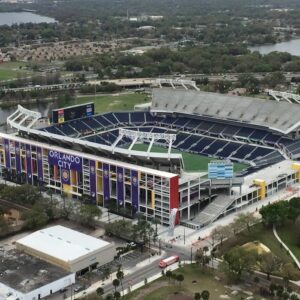As experts in fire safety, we want to unlock the truth behind fire suppression systems as we debunk myths, reveal crucial facts, and explore real-life applications that make Orlando fire system inspections a non-negotiable for safety-savvy businesses.
Around the DynaFire water cooler, we love to dish about myths we’ve encountered and proudly share how we skillfully debunked them. After all, fire safety is our passion. We understand that your office water cooler discussions might be different from ours, but when it comes to Orlando fire system inspections, we can’t stop talking!
To loop you in on the conversation, we’re sharing our favorite myths, facts, and how fire suppression systems are deployed in the real world.
Fire Suppression 101
As the name suggests, fire suppression systems suppress – or extinguish – fires. Professional fire safety companies like ours can design and install a fire suppression system that meets your facility’s unique needs and then follow up with regular maintenance. It sounds simple, but there’s a lot of information about these life-saving systems you should know. Let’s get into it – myths vs. facts.
Myth #1: All Fire Suppression Systems Are The Same
There are many different fire suppression systems, each designed to extinguish a particular kind of fire.
Fact #1: Fire Suppression Systems Use Water, Gas, or Foam
A water fire suppression system may work for you if your building houses materials like wood or paper (like an office building). However, if your business includes an airplane hanger or a paint factory, you may need an inert gas or foam fire suppression system.
Myth #2: Once Your Fire Suppression System Is Installed, It Never Needs Inspection
Certified Orlando fire system inspection personnel should routinely inspect your fire suppression system. That’s the only way to be sure that it will work when you need it.
Fact #2: Regular Inspections Are Crucial To Fire Safety
Having a professional team perform an Orlando fire system inspection according to NFPA guidelines will give you peace of mind that your fire suppression system is functioning correctly and ensure your property is in compliance with local codes and ordinances.
Myth #3: Water Is The Best Option For Fire Suppression
Don’t get us wrong, water is a good option, but water can’t extinguish a grease fire. It’s important to know which type of extinguishant will work on the materials in your facility. We can determine which system is best for your business.
Fact #3: Gas And Foam Are Great Fire Suppression Agents, Too
Fire suppression comes in many different forms:
- Expansion Foam Systems
- Clean Agent Systems (Waterless Suppression System)
- CO2
- Inert Gas
- FM-200
- Ecaro-25
- NOVEC 1230 (Sapphire)
- Halon 1301
- Pre-Action Sprinkler Systems
- Clean Agent or Waterless Fire Suppression Systems
- Water Deluge Systems
- And more
Our skilled fire suppression technicians can determine the best application for your facility. Speaking of facilities, let’s explore how fire suppression systems are used in the real world.
Real-World Application #1: Orlando City Soccer Stadium
DynaFire proudly installed the fire suppression system in the Orlando City Soccer Stadium. We used a clean agent fire suppression system to safeguard high-value assets and property from fire damage. These systems are crucial in facilities like the Orlando City Soccer Stadium, where critical equipment is placed in server rooms and sound booths.
Real-World Application #2: Encompass Health Hospital
DynaFire takes pride in contributing to the safety and well-being of the community by installing a state-of-the-art fire sprinkler system in Encompass Health Corp.’s 50-bed inpatient rehabilitation hospital in Osceola County near Kissimmee, Florida. The hospital’s commitment to patient care aligns seamlessly with DynaFire’s dedication to helping area businesses ensure the safety of their patients and staff.
Real-World Application #3: Port Canaveral Cruise Terminal
As part of our contribution to the redevelopment of the 186,986 square-foot, two-story cruise terminal at Port Canaveral, the DynaFire team installed a wet-pipe fire suppression system throughout the facility. We incorporated auxiliary dry-pipe systems as needed on the exterior, ensuring comprehensive coverage for the terminal and its six-level parking garage.
Bonus Fact: Partnering With DynaFire Is A Smart Way To Stay Safe
When separating fire suppression myth from fact, look to the professional Orlando fire system inspection team at DynaFire. We have served Central Florida businesses for 20 years and are ready to help you with your Fire & Life Safety needs. Contact us today for more information.






